 Այլ Բաժիններ Այլ Բաժիններ |
|
 Մուտքի Ձև Մուտքի Ձև |
|
Ask To PanArmenian Library
Որոնել կայքում/Search in site
 Բաժնի կատեգորիաները Բաժնի կատեգորիաները |
|
 Մեր Հարցումը Մեր Հարցումը |
|
 Վիճակագրություն Վիճակագրություն |
Կայքում են : 1 Հյուրեր: 1 Օգտվողներ: 0 |
Նորաձևություն
Haircuts 2013

|
| Ողջունում ենք Ձեզ, Гость · RSS |
24.12.2025, 13:56 |
|
Կատեգորիայի նյութերը՝: 37
Ցուցադրված նյութերը՝: 21-37 |
Էջեր: « 1 2 |
Դասավորել:
Ամսաթվով ·
Անունով ·
Վարկանիշով ·
Մեկնաբանություններով ·
Ներբեռնումներով ·
Ցուցադրություններով
I have several grammars of Armenian which I hope to post if there is interest. Readers of Russian of course already have plenty of materials at their disposal here, but others may like to have grammars in western European languages. |
This is one of the most important grammars of Armenian.It was so dear to me that I made an effort at digitizing it.Hence, the result will not win a beauty contest (although I might ) but the pdf is eminently viewable.Enjoy -- that includes the view of the Aght'amar/Akdamar church!
|
Вашему вниманию представляется букварь, который использовали большинство школьников 80-ых годов в Армении. Как и большинство букварей все начинается с простых букв с картинками, которые постепенно переходят в слоги, слова, предложения и несложные тексты.
|
Большой англо-армянский и русско-армянский словарь, содержит около 15000 слов. 
|
After the discovery of the large Hurrian-Hittite bilingual text K Bo XXXII and some other recent results of excavations, it has become possible to enrich the Hurro-Northern Caucasian comparison inaugurated by the late I. M. Diakonoff and continued by him together with S. A. Starostin. The latter recently found many new and persuasive etymologies connected with the new data.Some additions may be suggested in connection not only with Northern Caucasian but also with problems bearing on Indo-European.

|
Цель «Краткого курса армянского языка» – ознакомить читателей с элементами армянского языка и содействовать их усвоению. Пособие состоит из 5-и частей. Первая часть посвящена пропедевтическому курсу. Эта часть очень важна для тех, кто не знает армянских букв и не умеет читать по-армянски. Во второй части книги систематически изучаются основы армянской морфологии. Третью часть книги составляет словообразование. Четвертая часть посвящена синтаксису современного армянского языка. Пятая часть книги составляет армяно-русский словарь в объеме десяти тысяч слов. 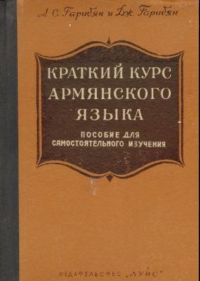
|
Книга предназначена для самостоятельного изучения армянского языка. Она рассчитана на широкий круг лиц, владеющих русским языком, не предполагает специальной лингвистической подготовки, но учитывает знание русской грамматики в объеме программы средней школы. 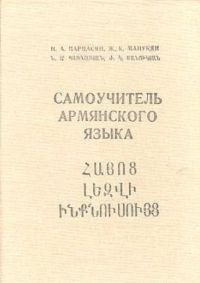
|
The Author having published in 1819 the first Edition of his Armenian Grammar for the use of English Students of that language, is encouraged to republish it in a more correct and complete form.In the present Edition will be found some specimens of Armenian Poetry, and some translations of Lord Byron from the Armenian into English; and there are added, by way of exercisef Extracts from the best Armenian Writers. Some of which are accompanied also with English translations.
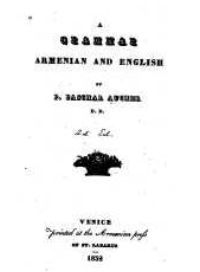
|
Данный разговорник может быть полезен не только для тех, кто владеет базовыми знаниями по армянскому языку, но и для тех, кто только начинает его изучать. В разговорнике содержится наиболее употребительные и необходимые в процессе коммуникации фразы и выражения. Слова и выражения в разговорнике приведены с транслитерацией, что значительно облегчает процесс запоминания. 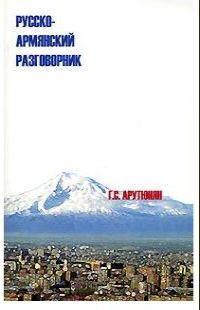
|
This is a manual of Armenian, written in Turkish. My knowledge of Turkish is identical to perfect vacuum, but fortunately the book comes with the subtitle in English: Manual of the Armenian Language.That's it!
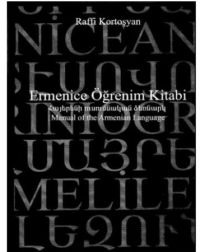
|
The title says it all: Self-practice guide on Armenian speech, id est, a conversation guide in Armenian written in Turkish. 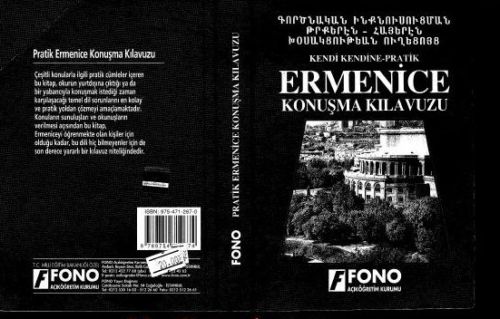
|
By reading this detailed book, you will learn about the Hemshin. The preface does not mention it, but there are two chapters about the language they speak, a sort of mixed Armenian.The Hemshin is the first scholarly work to provide an in-depth study of these people living in the eastern Black Sea region of Turkey. This groundbreaking volume brings together chapters written by an international group of scholars that cover the history, language, economy, culture and identity of the Hemshin. . 
|
Gramáetica elemtar da língua Armênia 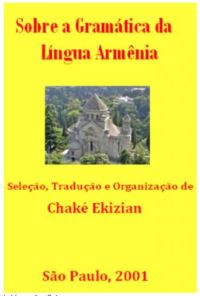
|
Aslanbeg is located in the northwest corner of Asia Minor, three hours by foot from the cities of Nicomedia and Isnimit (modern Iznik and Izmit, slightly southeast of Istanbul). There are actually three Aslanbegs (each now called ‘Aslanbey’) in northwest Turkey; though none of these appear on any map of Turkey, the Gazetteer lists their locations as 40.44N 30.48E, 41.46N 33.52E, and 40.42N 30.01E; Ôahukyan (1972) places it at roughly 41N 29.5E, near modern Gölcük, on the coast facing Izmit. 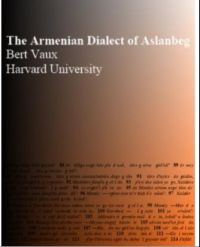
|
Հայերեն Բնագիտական Տերմինաբանություն |
For Translatiors. The simple way to find your <word>
|
For studing armenian grammatic rules.
|
|
|

 Copyright www.freebooks.do.am "ՀամաՀայկական Էլեկտրոնային Գրադարան"© 2008-2010 Արգելվում է առանց կայքի ադմինիստրացիայի թույլատվության կայքի նյութերի օգտագործումը այլ նպատակներով:
Copyright www.freebooks.do.am "ՀամաՀայկական Էլեկտրոնային Գրադարան"© 2008-2010 Արգելվում է առանց կայքի ադմինիստրացիայի թույլատվության կայքի նյութերի օգտագործումը այլ նպատակներով: